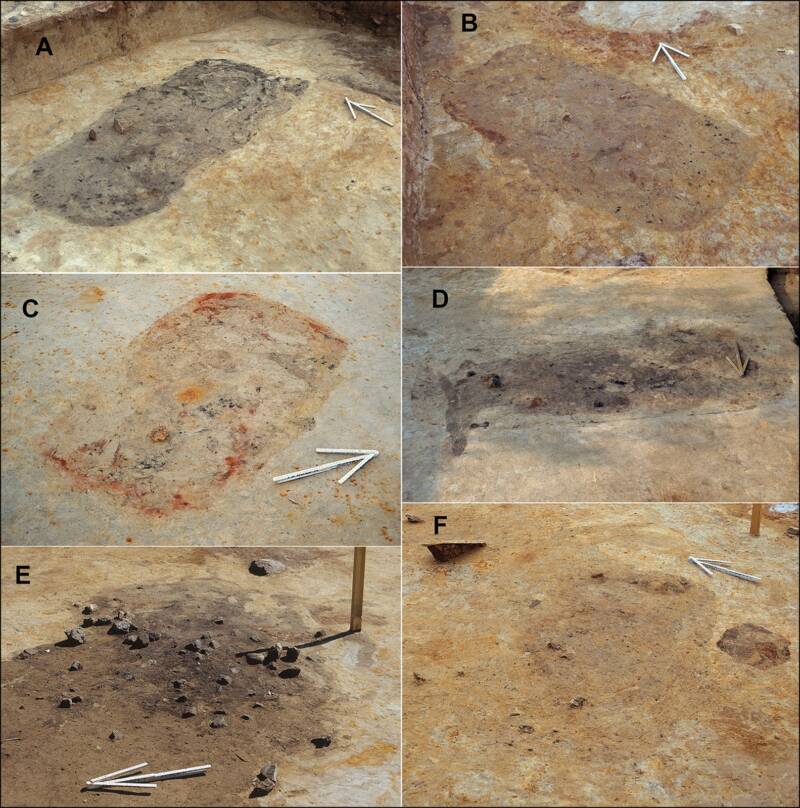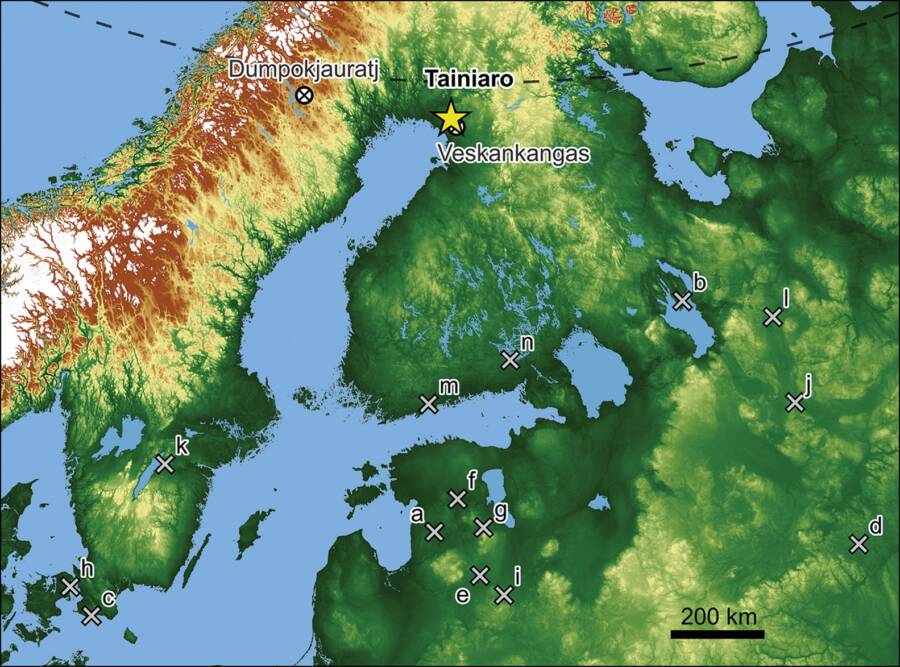The site is 6,500 years old and could hold as many as 200 graves — but any evidence of human skeletons has disappeared.

Tuija Laurén/Antiquity Publications Ltd.A Stone Age pit found at the Tainiaro site in Finland’s Lapland region.
An archaeological site known as Tainiaro in the Finnish region of Lapland may have experts reconsidering what they know about northern prehistoric life.
Tainiaro was first discovered back in 1959 when workers came across several ancient stone tools in Simo, Finland, 50 miles south of the Arctic Circle at the northern edge of the Baltic Sea. Throughout the 1980s and ’90s, further excavations at the site revealed even more ancient artifacts, including animal bones, stone tools, and pottery.
Archaeologists also discovered more than 100 pits within the site. Some of the mysterious holes showed evidence of burning, while others had traces of red ochre — a characteristic of Stone Age burials. Experts began to hypothesize that the pits may have been graves.
Now, archaeologists have compared these pits to graves at 14 other Stone Age burial sites across northern Europe in an effort to confirm whether they once held the remains of prehistoric humans.
In a new study published Dec. 1 in Antiquity, researchers revealed that they have discovered a total of 127 possible graves at the site — and that there may be more than 200 in all.

Aki Hakonen/Antiquity Publications Ltd. Various pits at Tainiaro, which may have contained human bodies 6,500 years ago.
“The European far north is an improbable location for a large prehistoric hunter-gatherer cemetery,” study authors wrote. “Tainiaro… was first excavated four decades ago but the unpublished findings and their potential significance have evaded wider recognition.”
Unfortunately, there is one key element missing that could help determine whether this really was a mass grave site: actual human skeletons.
The soil at Taniaro is highly acidic. Organic matter buried within it would have been destroyed within 1,000 years — and these pits are 6,500 years old. Any human remains would have vanished long ago.
“Stone Age graves leave behind only the shapes of pits and red ochre, which is scarce at Tainiaro,” said Aki Hakonen, the lead author of the study and an archaeologist at the University of Oulu, per Gizmodo. “The evidence is quite elusive.”
Still, the rectangular shapes of the pits and the red ochre might be enough to properly identify Tainiaro as a prehistoric cemetery, as both of these factors are indicative of other known Stone Age burial sites.
Based on these other sites, it is likely that the deceased at Tainiaro were buried on their backs or sides with their knees bent. They were also possibly wrapped in seal skins.
“Tainiaro should, in our opinion, be considered to be a cemetery site,” the authors wrote, “even though no skeletal material has survived.”
That said, red ochre was only found in 23 of the examined pits. Others contained remnants of ash and charcoal, and the study authors believe that at least some of the pits were used as hearths.
Researchers also noted that many of the pits showed no evidence of burning, and even the pits that did lacked signs — such as thick layers of charcoal and burnt sand and rocks — that they were consistently used as “a pyrotechnic feature.”

Aki Hakonen/Antiquity Publications Ltd.A map showing the distribution of Stone Age cemeteries across northern Europe.
“At Tainiaro, the pits do not appear to have been intended primarily for in situ fires,” study authors wrote. “Moreover, many of the pits at Tainiaro produced no clear evidence of burning at all. Some contained faintly discoloured fills, barely distinguishable from the natural soil; indeed, some other less conspicuous and irregular soil stains may indicate the presence of further pits, although many were probably formed by the annual freeze-thaw cycle.”
Given that only one-fifth of the site has been closely examined, it is possible that further excavations could reveal the much sought-after human remains that would, without a doubt, confirm Tainiaro was a burial site.
“For the time being, however, the notion that a large cemetery seems to have existed near the Arctic Circle should cause us to reconsider our impressions of the north and its peripheral place in world prehistory,” the researchers wrote.
Even if no intact human remains are found at the site, though, Hakonen noted that there are other ways to determine if Tainiaro was truly a cemetery.
“New soil samples could be analyzed for fossilized hair, which has been found in Stone Age graves in recent years,” Hakonen said. “Chemical analyses, such as the collection of ancient DNA directly from the soil, may provide unequivocal evidence for the burial interpretation or reveal entirely new findings that will guide our understanding of the Stone Age society to an even more fascinating direction.”
After reading about this potential mass grave dating back to the Stone Age, read about the discovery of a Stone Age child who may have been buried with a wolf. Or, read about the recent discovery of thousands of animal bones in a mass sacrifice pit in Spain.





